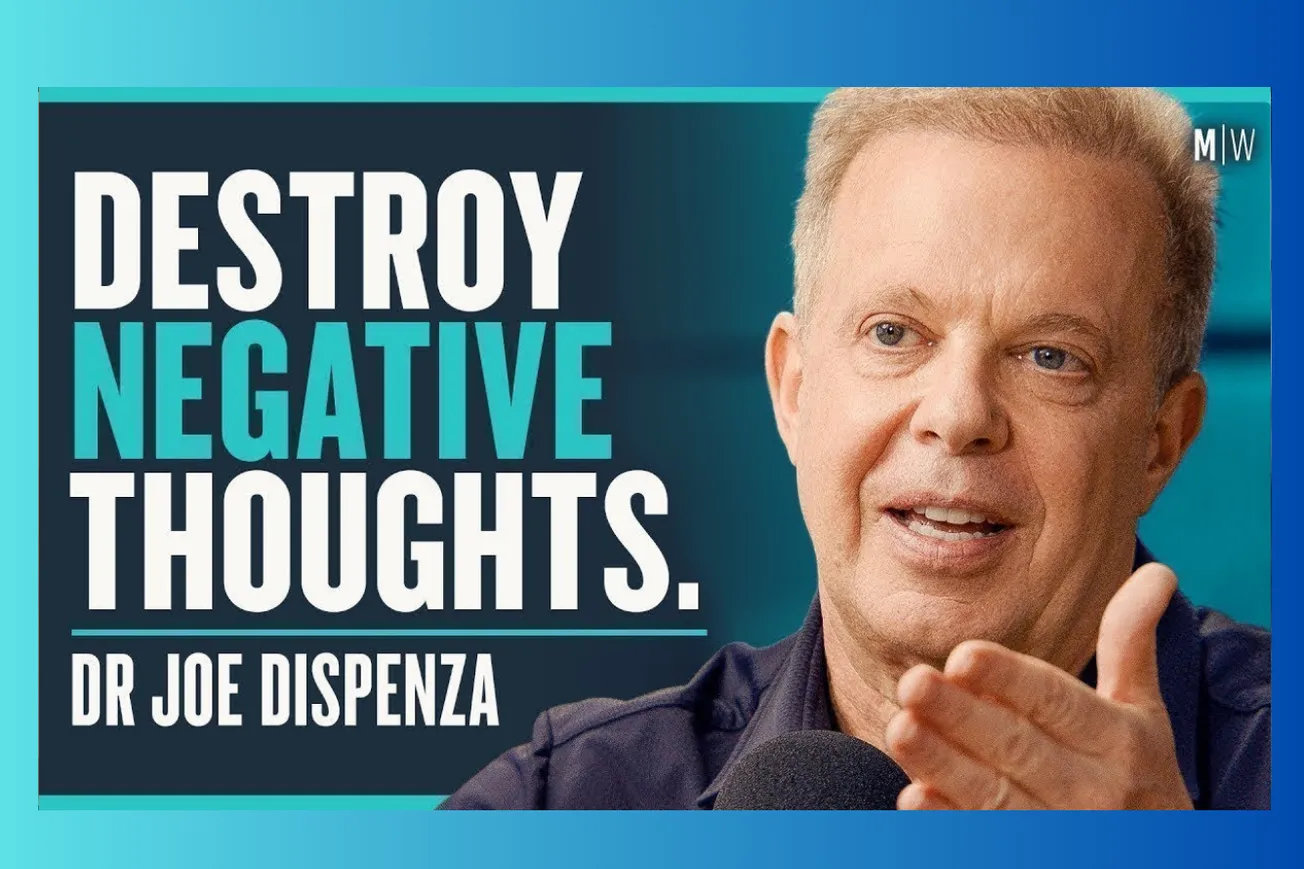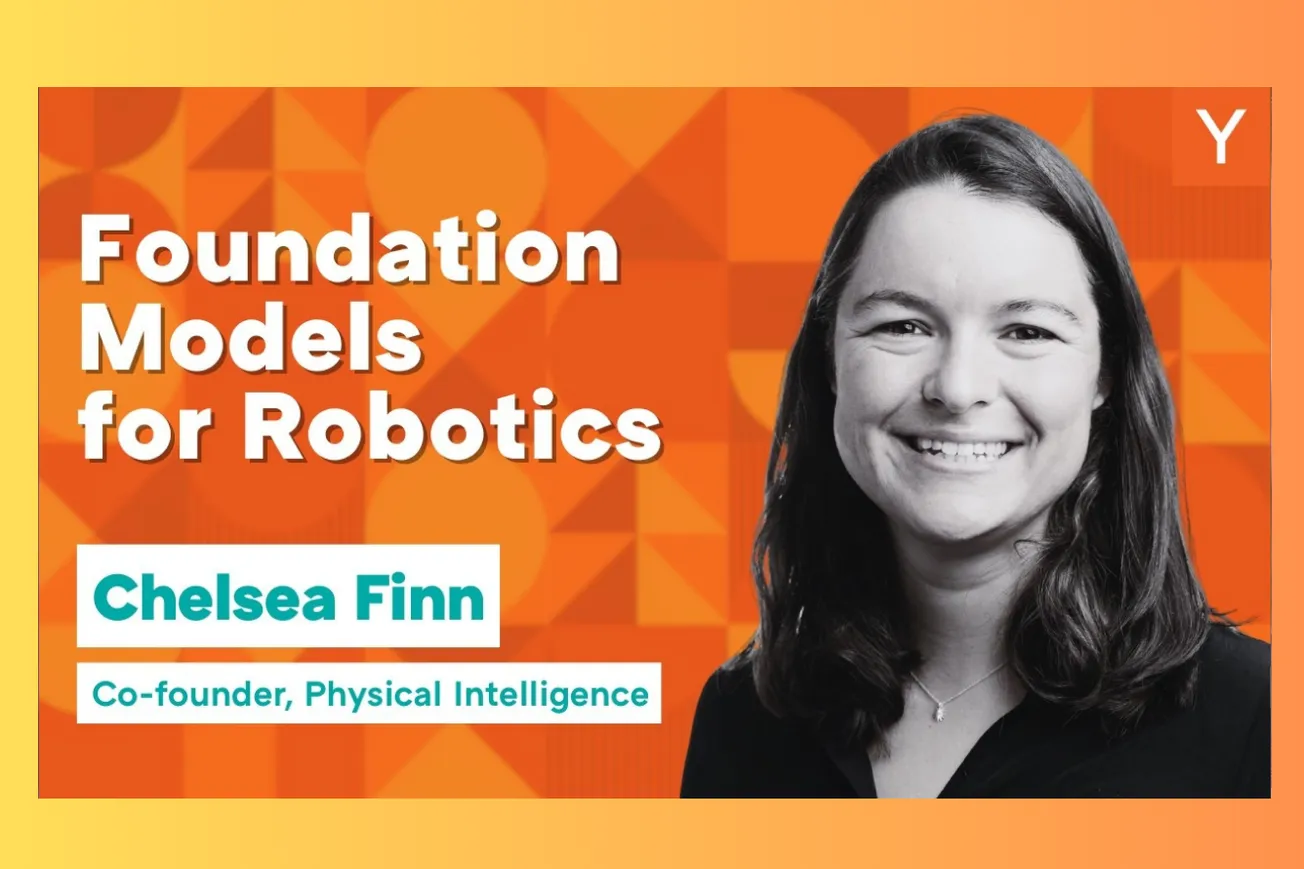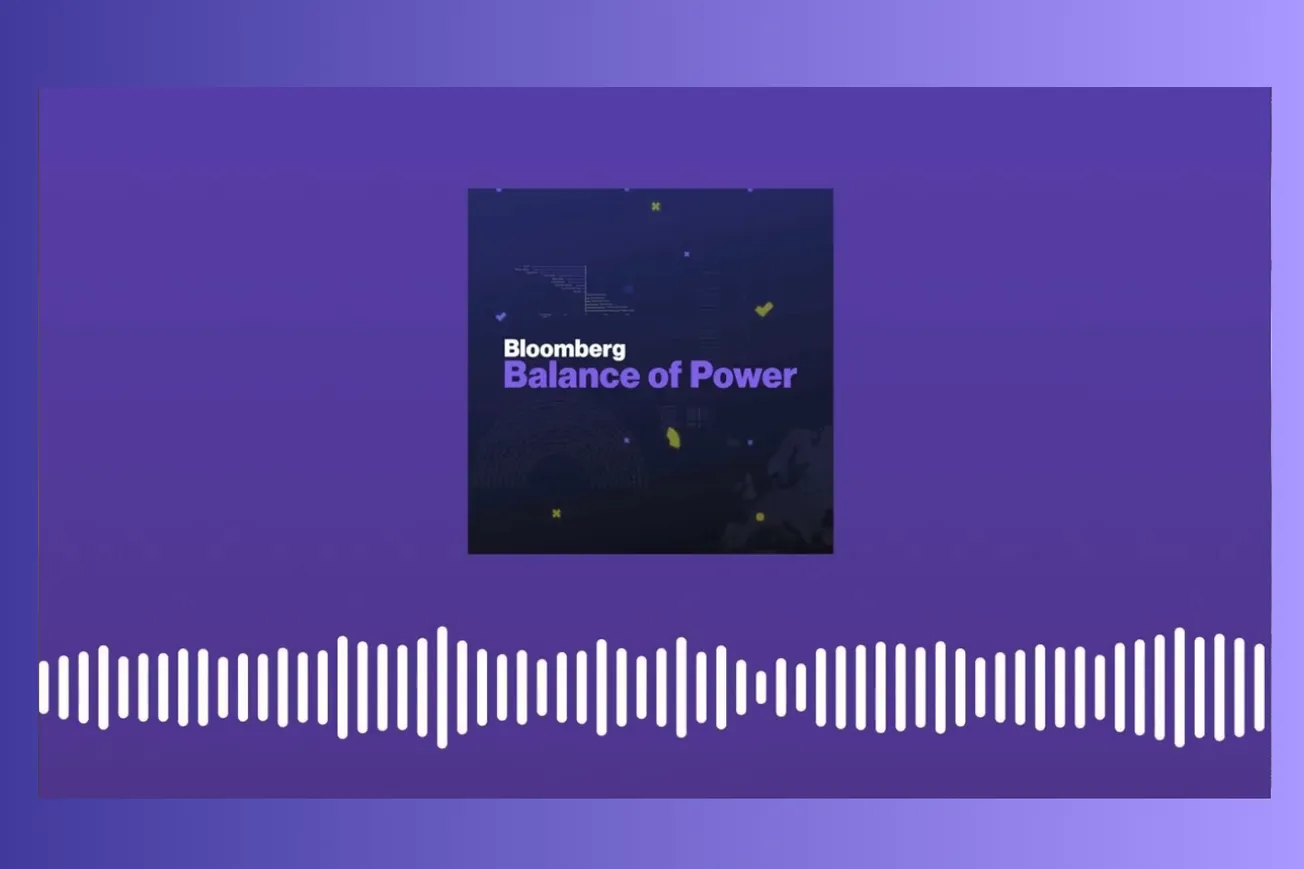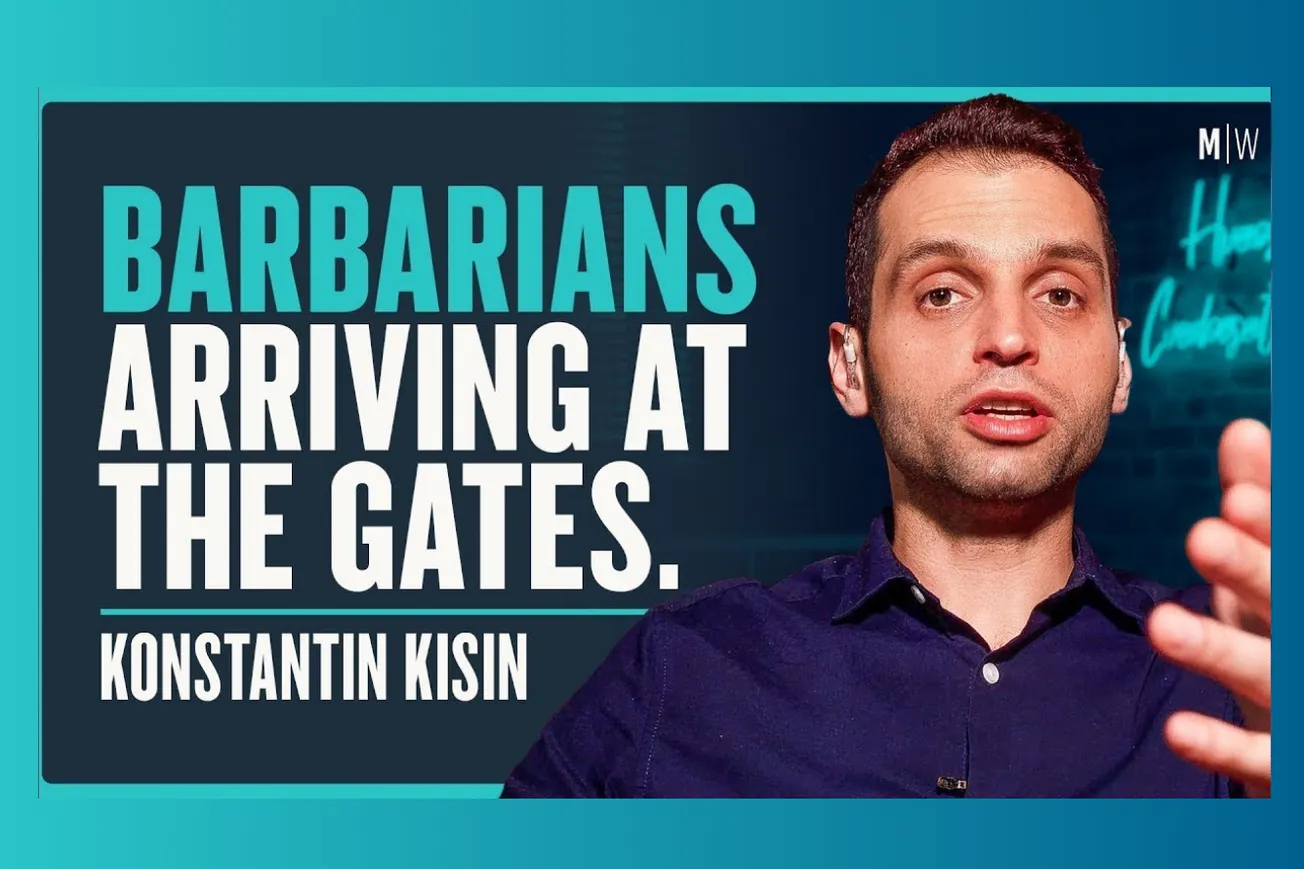Table of Contents
A deep dive into neuroscientist Dr. Joe Dispenza's revolutionary approach to rewiring the brain, overcoming emotional addictions, and creating lasting change through the power of consciousness and scientific meditation practices.
Key Takeaways
- Change requires becoming conscious of unconscious thoughts, behaviors, and emotions that keep us trapped in familiar patterns
- We become addicted to stress hormones and negative emotions, creating a chemical dependency that feels familiar but keeps us stuck
- The brain doesn't distinguish between real experiences and vividly imagined ones, making mental rehearsal a powerful tool for transformation
- Elevated emotions like gratitude can reprogram the autonomic nervous system and boost immune function by 50% in just four days
- Breaking free from survival mode requires mastering the present moment and becoming comfortable with uncertainty
- True change happens when you become greater than your body, environment, and time through consistent practice
- The period between sleep and waking offers optimal windows for reprogramming the subconscious mind
- Self-regulation means maintaining your internal state regardless of external circumstances
- Research shows advanced meditators' blood contains compounds that resist viruses and reduce cancer cell energy by 70%
Timeline Overview
- 00:00–03:43 — What Joe Does: Dispenza explains teaching the neuroscience and biology of change, combining quantum physics with neuroscience to help people understand transformation at a cellular level
- 03:43–09:40 — Why is it So Hard to Make Changes in Our Lives?: Exploration of how 95% of who we are by midlife consists of unconscious programs, and why making different choices feels uncomfortable and unfamiliar
- 09:40–14:24 — Creating Deep & Sustainable Changes: Discussion of surface-level versus deep transformation, the importance of crisis moments for genuine change, and moving from pain-based to joy-based learning
- 14:24–20:28 — Becoming Comfortable With the Unknown: How the brain records the past and predicts the future, why the present moment is the only place transformation occurs, and techniques for mastering uncertainty
- 20:28–33:10 — Are We Addicted to Our Own Thoughts?: Deep dive into stress hormone addiction, how thoughts alone can trigger disease-creating responses, and breaking the cycle of thinking and feeling
- 33:10–39:48 — Dealing With Miraculous Stories of Success: Examples of dramatic health transformations, the unbelievable nature of testimonials, and how breakthrough stories inspire collective belief
- 39:48–44:10 — Most Common Criticisms of Joe's Work: Addressing scientific skepticism, the rigorous research methodology, and how unprecedented results challenge conventional medical understanding
- 44:10–54:55 — Long-Term Impact on Joe's Clients: Longitudinal studies showing sustained changes, the difference between temporary improvements and permanent upgrades, and community commitment to practice
- 54:55–57:25 — Real-Time Experiences of Clients: Biological mechanisms behind mystical experiences, gamma brain wave patterns, and the subjective reports of transformation during meditation
- 57:25–01:00:11 — Why Fear is So Pervasive: Understanding fear's adaptive versus maladaptive functions, how the brain predicts worst-case scenarios, and why vigilance becomes automatic
- 01:00:11–01:08:35 — How to Fear Less: Practical techniques for mastering fear responses, conditioning the body to new emotional states, and using meditation to overcome anxiety patterns
- 01:08:35–01:11:54 — Responding to Theo Von & Sean Strickland: Analysis of vulnerability and trauma healing, the importance of creating safe spaces for emotional release, and childhood trauma's unique challenges
- 01:11:54–01:18:58 — Learning to Reconnect With Your Feelings: The lost art of self-reflection, sitting with yourself without distractions, and how modern technology robs us of internal awareness
- 01:18:58–01:27:34 — What People Get Wrong About Gratitude: Moving beyond gratitude journals to embodying the emotion, feeling grateful for unrealized futures, and the biology of elevated emotions
- 01:27:34–01:35:08 — The Important Role of Hard Work: Balancing intention with surrender, building understanding through immersion, and the difference between struggling and flowing in creation
- 01:35:08–01:45:38 — Joe's Message to Left-Brain People: Using science as the language of mysticism, demystifying transformation through rigorous research, and converting skeptics through evidence
- 01:45:38–01:55:39 — Tactics for Self-Regulation: Heart-brain coherence techniques, practicing emotional regulation under pressure, and maintaining internal states regardless of external circumstances
- 01:55:39–02:01:44 — How Important is Belief for Behaviour?: The relationship between worthiness and manifestation, moving from victim to creator consciousness, and investing in your future self
- 02:01:44–02:08:25 — The Sneaky Ways Stress Enters Our Lives: Hidden stress emotions like judgment and competition, the addiction to stress chemicals, and how elevated emotions become the antidote
- 02:08:25–02:15:36 — How Important is it to Disconnect?: Technology's hijacking of pleasure centers, the importance of in-person community, and reclaiming attention from addictive devices
- 02:15:36–02:19:29 — Common Patterns in Relationships: Unconscious expectations for happiness, emotional agreements between people, and how personal transformation affects relationship dynamics
- 02:19:29–02:26:22 — The Role of Spirituality in Science: Science as contemporary mysticism language, demystifying spiritual experiences through measurement, and bridging ancient wisdom with modern research
- 02:26:22–02:35:45 — Joe's Thoughts on Psychedelics: Comparing plant medicine to endogenous experiences, the importance of integration over repeated ceremonies, and measuring natural DMT production
- 02:35:45–02:42:41 — The Important Windows of Going to Bed & Waking Up: Brain wave transitions between sleep and waking, optimal times for subconscious reprogramming, and practical techniques for both morning and evening people
- 02:42:41–02:44:37 — Joe's Ideal Daily Routine: Three foundational meditations for brain coherence, heart regulation, and synchronized function, plus accessible starting points for beginners
- 02:44:37–end — What's Next for Joe: Upcoming documentary releases, prison transformation programs, indigenous tribe work, and continued research into endogenous mystical compounds
The Unconscious Mind: Breaking 95% Automated Programming
"95% of Who We Are by the middle of our life is an unconscious set of thoughts, behaviors and emotions that are automatically programmed into our biology."
The most profound insight from Dispenza's work reveals that by midlife, nearly all of our daily experience runs on autopilot. We wake up thinking the same thoughts, feeling the same emotions, and taking the same actions without conscious awareness. This automaticity creates what he calls "hardwired" neural circuits that become increasingly difficult to change.
The problem isn't lack of intention—most people genuinely want to transform their lives. The challenge lies in the gap between conscious desire and unconscious programming. Your conscious mind might decide to be more patient, but your unconscious emotional patterns still trigger anger at familiar circumstances. Real change requires becoming so conscious of these unconscious patterns that you catch them in real-time and choose differently.
"The first step to change is not thinking positively—you got to become conscious of those unconscious thoughts. When you decide to make a different choice and it doesn't feel familiar, the thought that says 'start tomorrow,' 'it's too hard,' 'just do it anyway'—you have to be able to become so conscious of those unconscious thoughts that you would never go unconscious to that thought ever again."
This level of awareness demands what Dispenza calls "metacognition"—thinking about your thinking. Most people remain inside their patterns like being inside a jar unable to read the label. Crisis often forces this external perspective, but the goal is developing this awareness voluntarily through consistent self-observation.
Stress Hormone Addiction: The Chemical Chains That Bind
Key Quote: "If the hormones of stress are addictive and you can turn on the stress response just by thought alone, you could become addicted to your own thoughts."
Perhaps the most counterintuitive discovery in Dispenza's research involves our addiction to stress chemicals. When we perceive threats, our nervous system releases adrenaline and cortisol to prepare for action. These chemicals create arousal and energy that can become psychologically addictive, even when the stress response is damaging our health.
People unconsciously seek problems, drama, and conflict to trigger familiar chemical rushes. They replay traumatic memories, worry about potential futures, or create relationship conflicts—all to maintain their addiction to stress hormones. The body becomes so conditioned to these chemicals that feeling peaceful or content seems boring or uncomfortable.
"So they need the bad job, they need the bad relationship, they need the challenging conditions in their life because it makes them feel something right... you use the problems, you use the conditions, the stories of the past in your life to reaffirm your addiction to that emotion."
Breaking this addiction requires recognizing that your thoughts alone can create the same physiological stress response as actual threats. Every time you replay a traumatic memory or worry about potential problems, you're essentially taking a hit of stress drugs. The long-term effects include genetic expressions that create disease, making your thoughts literally capable of making you sick.
Mental Rehearsal: Rewiring Your Brain for the Future
Key Quote: "When you mentally rehearse doing something, the brain does not know the difference between the outside world event and what you're imagining in your mind—to the brain it's exactly the same."
The neuroscience of mental rehearsal reveals why athletes and performers practice visualizing success. Brain imaging shows that imagining an action creates nearly identical neural activity to physically performing it. This means you can literally grow new circuits in your brain by repeatedly rehearsing desired behaviors and emotional states.
The research Dispenza cites involved two groups learning piano scales. One group practiced physically for two hours daily; the other group only mentally rehearsed for the same duration. After five days, brain scans showed both groups developed similar neural patterns. When the mental rehearsal group sat at a real piano, they could actually play the scales they'd only imagined practicing.
"Your brain is no longer a record of the past—it's being conditioned and mapped into the future. So now you have the circuitry in place. If you keep practicing that, the hardware becomes more automatic, it becomes more of a software program."
This principle applies to emotional states and life situations. Instead of hoping you'll respond differently in challenging circumstances, you rehearse the exact thoughts, feelings, and behaviors you want to embody. You practice feeling grateful instead of resentful, choosing patience over anger, or responding with love instead of fear.
The Biology of Elevated Emotions
Key Quote: "Four days of changing their emotions from resentment and judgment and frustration and impatience to gratitude and appreciation... their IGA levels went up 50% just in four days."
Dispenza's research with the University of California San Diego demonstrates measurable biological changes when people shift from survival emotions to elevated states. Immunoglobulin A (IgA)—the body's primary immune defense—increased by 50% in just four days of practicing gratitude instead of resentment.
The mechanism involves heart coherence patterns that trigger oxytocin release, which signals nitric oxide production, causing arteries to dilate and blood flow to increase. This creates the physical sensation of an "open heart" while simultaneously optimizing cardiovascular function and immune response.
"The emotional signature of gratitude means something wonderful is happening to you or something wonderful has just happened to you... can you be grateful for things that you haven't had yet but you believe enough that you can have?"
The revolutionary aspect involves feeling grateful for unrealized futures rather than only appreciating current circumstances. When you embody the emotion of already having received what you desire, your biology shifts to match that reality. This isn't positive thinking—it's training your nervous system to operate from abundance rather than lack.
Self-Regulation Under Pressure
Key Quote: "Self-regulation is the ability to regulate or control your internal state of how you're thinking and feeling in a condition in your environment that normally would create another feeling or another emotion."
True self-regulation goes beyond managing emotions in comfortable settings. Dispenza's community practices maintaining heart coherence while rappelling off buildings or standing on 50-foot poles. The goal isn't adrenaline-seeking but proving you can regulate your nervous system under genuine pressure.
The technique involves what Dispenza calls the "relaxed heart, awake brain" formula. As you relax deeper into your heart center, your brain paradoxically becomes more alert and aware. This combination creates a state of calm readiness that can be maintained regardless of external circumstances.
"If you could self-regulate in that moment and return back into your life... it's going to feel like you should be able to do it in your life as well. Not only that, if you put the stakes really high and the threshold is really high, then you face the problems in your life you're like 'Ah, that's not so bad' relative to what I just did."
The practice progresses from eyes-closed meditation to standing meditation to walking meditation with eyes open. Eventually, you can shift into coherent states instantly when facing challenging people or situations. This becomes a learnable skill rather than hoping you'll respond better under pressure.
Dr. Dispenza's work represents a paradigm shift from hoping external circumstances will change to taking responsibility for your internal state. His research demonstrates that consciousness isn't merely a byproduct of brain chemistry—it's an active force capable of reshaping biology, personality, and life circumstances. The implications extend far beyond personal development into areas of medicine, education, and human potential that science is only beginning to understand.
The practical applications center on daily meditation practices that synchronize heart and brain function, combined with mental rehearsal of desired futures and consistent self-monitoring throughout daily activities. This isn't about perfection but about increasing conscious choice over unconscious reaction, ultimately rewiring your nervous system for the life experience you truly want to create.
The Addiction to Familiar Suffering
One of Dispenza's most striking insights concerns our addiction to stress hormones and negative emotions. When we perceive threats or feel out of control, our nervous system releases chemicals like adrenaline that create a surge of energy. Over time, people become dependent on this chemical rush, unconsciously seeking problems and drama to recreate familiar emotional states.
The body becomes conditioned to expect these chemical hits. Someone might need conflict in relationships, challenges at work, or anxiety about the future to feel "normal." They use memories of past traumas or worries about potential problems to trigger the same stress response, essentially becoming addicted to their own thoughts.
This addiction operates below conscious awareness. People think they want to change, but their biology craves the familiar chemistry of their past. The body sends signals to the brain requesting the same thoughts that generate the same emotions, creating a self-perpetuating cycle that feels impossible to break.
Research shows that 50% of traumatic memories are embellished over time. People unconsciously exaggerate their stories to justify remaining stuck in limiting emotional states. They're literally reliving miserable lives they never actually had, all to maintain their addiction to familiar feelings.
Mastering the Unknown Territory
The space between the familiar past and predictable future represents the unknown – the only place where genuine transformation can occur. This territory feels threatening because our nervous system evolved to treat uncertainty as potential danger. However, Dispenza's research demonstrates that people can learn to become comfortable in this space.
The practice involves sitting quietly and becoming present without letting your attention drift to past problems or future concerns. When your mind wanders to familiar thoughts, you gently return attention to the present moment. When your body becomes restless or aroused, seeking the familiar chemistry of stress, you settle it back into stillness.
This isn't passive meditation. It's active training of your nervous system to function in a new way. With consistent practice, people discover that nothing dangerous happens in the unknown. The anticipation of discomfort proves far worse than the actual experience of uncertainty.
Advanced practitioners report that their bodies eventually surrender to the present moment completely. Energy moves into the heart center, creating feelings of gratitude and expansion. The brain shifts into coherent patterns that promote healing and creativity rather than survival and protection.
Mental Rehearsal and Brain Plasticity
Dispenza emphasizes mental rehearsal as a crucial component of transformation. Studies demonstrate that the brain cannot distinguish between real experiences and vividly imagined ones. When people mentally rehearse new behaviors and emotional states, they literally grow new neural circuits that prepare them for different responses.
Professional athletes and performers have long used this technique. They visualize successful performances repeatedly, creating brain patterns that support peak execution when it matters. Dispenza applies this principle to personal transformation, teaching people to rehearse being the person they want to become.
The process involves getting clear on specific behaviors, thoughts, and emotions you want to embody. Rather than hoping change will happen spontaneously, you consciously practice new responses to familiar situations. You rehearse feeling grateful instead of resentful, responding with patience instead of anger, or choosing love instead of fear.
This mental practice creates what Dispenza calls "hardware" in the brain – new neural pathways that make different choices more automatic. People literally wire their brains for the future they want to experience rather than remaining wired for their past.
The Biology of Elevated Emotions
Research conducted in partnership with the University of California San Diego reveals profound biological changes when people shift from survival emotions to elevated states. Four days of practicing gratitude instead of resentment increased immune function (IgA levels) by 50%. Participants' hearts began beating in more coherent patterns, and their bodies produced dramatically different chemical combinations.
Elevated emotions like gratitude, appreciation, and love create what Dispenza calls the "ultimate state of receiving." When you feel grateful for something wonderful happening, your body chemistry reflects abundance and wellbeing. The key insight is that you can generate these feelings before external circumstances change, essentially teaching your body what your future will feel like.
This approach reverses the typical formula of waiting for life to change before feeling better. Instead of believing "I'll be happy when I get what I want," people learn to feel the emotions of their desired future in advance. This emotional state makes them more likely to notice opportunities and take actions aligned with their goals.
The research shows that people in elevated emotional states accept, believe, and surrender to thoughts equal to those feelings. If you feel grateful and abundant, positive thoughts about your future are more likely to be embodied rather than remaining as empty mental concepts.
Self-Regulation in Challenging Environments
Self-regulation represents the ability to maintain your chosen internal state regardless of external circumstances. This goes beyond managing reactions in comfortable settings; it requires practicing emotional mastery when facing genuine challenges and disruptions.
Dispenza's community practices self-regulation in structured exercises that intentionally create stress. Participants might rappel off buildings or stand on high platforms while maintaining heart coherence. The goal isn't thrill-seeking but proving to yourself that you can regulate your nervous system under pressure.
The formula involves relaxing into your heart while keeping your brain awake and aware. This combination of calm alertness becomes accessible through practice. When mastered with eyes closed, people learn to maintain this state while walking, then with eyes open, then during increasingly challenging circumstances.
Real-world application means responding differently to the same people and situations that previously triggered automatic reactions. Someone who typically becomes angry with their spouse practices responding with patience. A person prone to anxiety learns to shift into heart coherence when facing uncertainty.
The Power of Gratitude Beyond Positive Thinking
Dispenza distinguishes between superficial gratitude practices and the deep emotional states that create biological change. Simply listing things you're thankful for has limited impact compared to actually feeling the emotion of gratitude in your body.
True gratitude practice involves generating the feeling of already having received something wonderful. This emotional signature tells your body that abundance is present, triggering chemistry associated with wellbeing and growth. The practice extends beyond appreciating current blessings to feeling grateful for future possibilities as if they've already manifested.
Research participants who sustained gratitude for extended periods showed remarkable biological improvements. Their hearts functioned more efficiently, stress hormones decreased, and immune markers increased dramatically. The key was maintaining the elevated emotion consistently rather than brief moments of positive feeling.
This approach requires changing your physiology first, then sustaining that elevated state throughout daily activities. Rather than hoping external events will make you grateful, you become skilled at generating gratitude independently. This internal abundance naturally attracts opportunities and experiences that match your elevated state.
Breaking Free from Victim Consciousness
Many people remain stuck because they fundamentally don't believe they can change their circumstances. They accept that transformation works for others but not for them. This victim consciousness creates a self-fulfilling prophecy where people unconsciously sabotage their progress to maintain familiar identity.
The shift from victim to creator requires taking full responsibility for your internal state. This doesn't mean blaming yourself for past circumstances but recognizing your power to choose your response to any situation. When you stop waiting for external conditions to change before feeling better, you reclaim your creative authority.
Dispenza describes witnessing people with severe health conditions achieve remarkable recoveries through this process. They stopped believing in their limitations and started investing energy in their desired future rather than their problematic past. The biological improvements often happen rapidly when people fully commit to internal change.
The process requires uncomfortable self-examination. People must become willing to see how their own thoughts and emotions have contributed to their current circumstances. This awareness creates the possibility for different choices and, ultimately, different results.
Practical Implementation for Lasting Change
Transformation requires consistent daily practice rather than sporadic efforts. Dispenza recommends starting with basic meditations focused on brain coherence and heart regulation. These 20-minute practices help synchronize different brain regions and create internal balance.
The morning and evening periods when transitioning between sleep and waking offer optimal windows for reprogramming. During these times, the analytical mind relaxes, making the subconscious more accessible to new information. People can review their day, identify patterns they want to change, and rehearse new responses.
Daily implementation involves constant self-monitoring. Throughout the day, you catch yourself falling into old patterns and consciously choose differently. This isn't about perfection but about increasing awareness and making better choices more consistently.
The work becomes easier as new neural pathways strengthen and elevated emotions become more familiar. Eventually, people report that their new way of being feels more natural than their old patterns. They've literally rewired their brain and body for a different life experience.
Sustainable change happens when transformation becomes intrinsically motivated rather than driven by external goals. People continue the practice because they love who they're becoming, not because they're trying to get something. This internal fulfillment proves more satisfying than any external achievement could provide.
Practical Implications
• Establish Daily Meditation Practice: Start with 20-minute sessions focusing on brain coherence and heart regulation to create internal balance and synchronize neural networks
• Monitor Unconscious Patterns: Throughout each day, catch yourself falling into automatic thoughts, behaviors, and emotional reactions—awareness alone begins the rewiring process
• Practice Mental Rehearsal: Spend time visualizing how you want to respond in challenging situations, literally growing new neural circuits for different choices
• Utilize Sleep-Wake Windows: Use the transitional periods between sleep and waking for subconscious reprogramming when the analytical mind is relaxed
• Master Present Moment Awareness: Train your attention to remain in the present rather than defaulting to familiar past memories or predictable future worries
• Develop Stress Response Recognition: Learn to identify when you're seeking problems or drama to trigger familiar stress chemical rushes, then consciously choose elevated emotions instead
• Build Self-Regulation Skills: Practice maintaining your chosen internal state regardless of external circumstances, starting with comfortable settings and progressing to challenging environments
• Create Emotional Variety: Break addiction to limiting emotions by consciously generating feelings of gratitude, appreciation, and love before external circumstances warrant them
• Implement Technology Boundaries: Regularly disconnect from devices to reclaim attention and develop the capacity for sustained focus and self-reflection
• Join Supportive Communities: Engage with others committed to transformation, as collective energy and shared intention amplify individual efforts
Conclusion
Dr. Joe Dispenza has spent decades researching how people can break free from limiting patterns and create lasting change. His work combines quantum physics, neuroscience, and epigenetics to demonstrate that our thoughts literally shape our biology. The fundamental principle is deceptively simple: if you change, your life changes. Nothing changes in our external world until we change internally.
The challenge lies in execution. Most people remain trapped in what Dispenza calls the "familiar past" and "predictable future." They wake up thinking the same thoughts, feeling the same emotions, and taking the same actions. This repetition creates neurological hardwiring that becomes increasingly automatic. By midlife, approximately 95% of who we are consists of unconscious programs running in the background.
Breaking these patterns requires more than positive thinking. It demands becoming so conscious of your unconscious self that you never go unconscious to those limiting thoughts again. This process involves catching yourself in moments of automatic reaction and choosing differently, even when it feels uncomfortable or unfamiliar.





